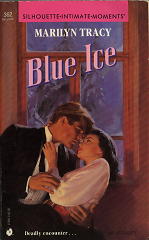Wed 5 Nov 2008
A Review by Mary Reed: NATALIE SUMNER LINCOLN – The Red Seal.
Posted by Steve under Authors , Bibliographies, Lists & Checklists , Crime Fiction IV , Reviews1 Comment
NATALIE SUMNER LINCOLN – The Red Seal. D. Appleton & Co., hardcover, 1920. Hardcover reprint: A. L. Burt, n.d. Trade paperback reprint: Dodo Press, 2007.

Twins Helen and Barbara McIntyre arrive at court to give evidence against one John Smith, caught burgling the McIntyre mansion. Strange to relate, the sisters ask lawyer Philip Rochester, who happens to be present, to defend Smith, which task he undertakes.
Smith is taken ill as he leaves the witness box and dies, whereupon he is discovered to be in disguise. He is James Turnbull, cashier of the Metropolis Trust Company, Helen’s fiance, and Rochester’s room mate. Incredibly, all three claim not to have recognised him. Turnbull’s angina pectoris is thought to have caused his death, but Helen insists on an autopsy.
It transpires Turnbull was burgling the house because of a silly wager made with Barbara that he could not pull it off. Barbara asks her sweetheart Harry Kent, Rochester’s partner in a legal practice, to find out who murdered Turnbull, for she and her sister are convinced his death was the result of foul play.
Soon the deceased Turnbull is suspected of forgery, Rochester goes missing, an eavesdropper lurks at a window, and a handkerchief is suspected as being the murder weapon. To further the busy plot, various characters play pass the red-sealed envelope, whose contents turn out to be the last thing most readers will expect.

My verdict: While the initial pace is slow, it picks up after a few chapters. The solution is complicated, not to say outrageous, so don’t try reading The Red Seal if there is anything to distract you from noting every nuance.
Cleverly worked red herrings mislead, and the explanation of the characters’ roles in the tragedy and subsequent events features what must be the largest number of culprits-named-and-then-it’s-someone-else’s-turn-to-be-accused many readers will have read — and all in a single chapter!
Or to put it another way, the plot features twists galore. I suspect not many readers will guess whodunnit.
Etext: http://onlinebooks.library.upenn.edu/webbin/gutbook/lookup?num=1747
Bibliographic data (taken from Crime Fiction IV, by Allen J. Hubin) —
LINCOLN, NATALIE SUMNER. 1881-1935.
* The Trevor Case (n.) Appleton 1912 [Washington, D.C.]
* The Lost Despatch (n.) Appleton 1913 [Washington, D.C.; 1865]
* The Man Inside (n.) Appleton 1914 [Washington, D.C.]
* C.O.D. (n.) Appleton 1915
* The Official Chaperone (n.) Appleton 1915 [Washington, D.C.]
* I Spy (n.) Appleton 1916 [Insp. Mitchell; Washington, D.C.]

* The Nameless Man (n.) Appleton 1917 [Insp. Mitchell; Washington, D.C.]
* The Moving Finger (n.) Appleton 1918 [Insp. Mitchell; Virginia]
* The Three Strings (n.) Appleton 1918 [Insp. Mitchell; Washington, D.C.]
* The Red Seal (n.) Appleton 1920 [Detective Ferguson; Washington, D.C.]
* The Unseen Ear (n.) Appleton 1921 [Detective Ferguson; Washington, D.C.]
* The Cat’s Paw (n.) Appleton 1922 [Insp. Mitchell; Washington, D.C.]
* The Meredith Mystery (n.) Appleton 1923 [Insp. Mitchell; Virginia]
* The Thirteenth Letter (n.) Appleton 1924 [Maryland]
* The Missing Initial (n.) Appleton 1925 [Insp. Mitchell; Washington, D.C.]
* The Blue Car Mystery (n.) Appleton 1926 [Insp. Mitchell; Washington, D.C.]

* The Dancing Silhouette (n.) Appleton 1927 [Insp. Mitchell; Washington, D.C.]
* P.P.C. (n.) Appleton 1927 [Insp. Mitchell; Washington, D.C.]
* The Secret of Mohawk Pond (n.) Appleton 1928 [Connecticut]
* The Fifth Latchkey (n.) Appleton 1929 [Maryland]

* Marked “Cancelled” (n.) Appleton 1930 [Washington, D.C.]

* 13 Thirteenth Street (n.) Appleton 1932 [Washington, D.C.]















